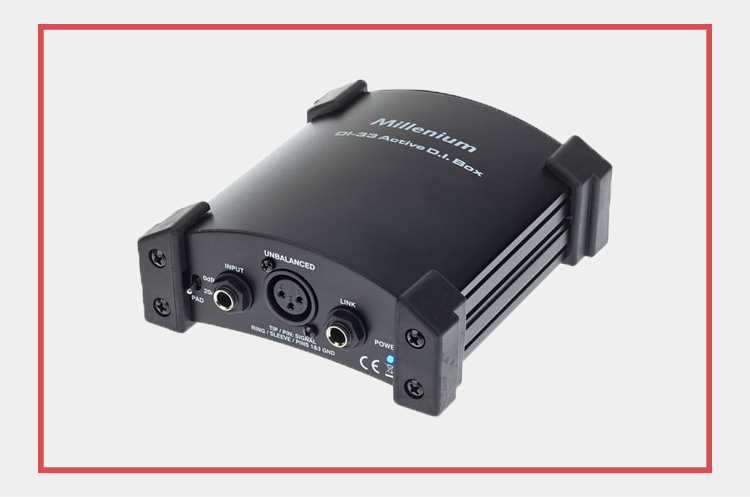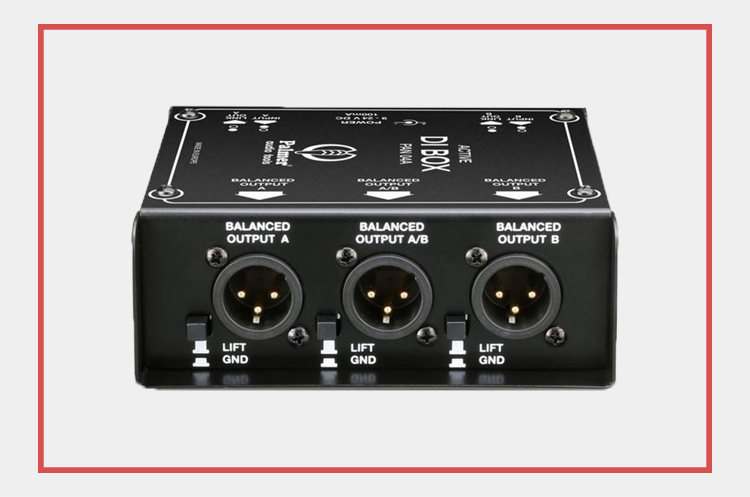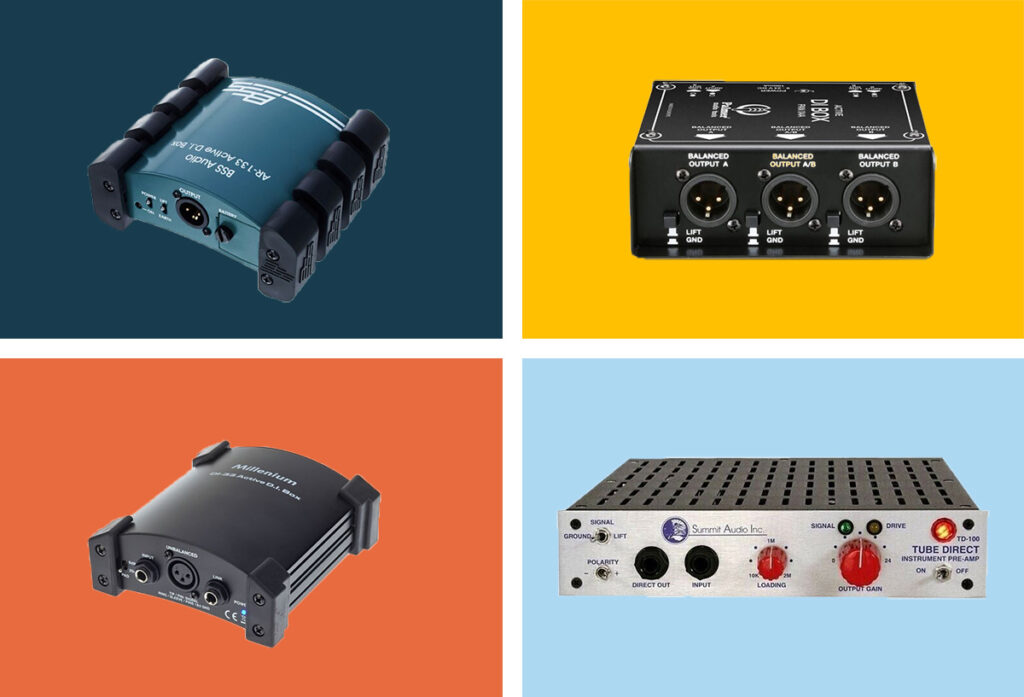What are DI boxes?
DI (Direct Injection) boxes are an indispensable tool for musicians and sound engineers. They are used to connect an instrument with a high-impedance output, e.g. an electric guitar or bass, to a balanced, low-impedance input, e.g. a mixing console or a Audio interface.
They are typically used for live sound situations and studio recording, as well as many other applications where signals from instruments need to be converted into a form that can be transmitted over long distances without degradation or interference.
There are 5 important functions that a DI box fulfills:
Impedance matching
One of the biggest challenges when connecting an instrument to a mixer or audio interface is that the output impedance of the instrument is much higher than the input impedance of the mixer or interface. This is often the case with e-guitars, e-basses, and keyboards.
This impedance mismatch can result in a loss of high frequencies, called "loading," which degrades the sound quality of the instrument. A DI box matches the impedance of the instrument to the input impedance of the mixer or interface, ensuring that sound quality is maintained.
Level adjustment
Most instruments have outputs that are much higher than the inputs of a mixer or audio interface. With a DI box, the instrument's level can be adjusted to the input level of the mixer or interface, called mic level.
The microphone level is much lower than the line (instrument) level. This means that if I plug an electric guitar directly into the mic input, the signal will be extremely loud or even distorted. This is exactly why DI boxes are so important - but most modern audio interfaces already have line-level inputs, so you usually don't need an additional DI box.
Isolation
Unwanted noise such as hum and buzz can also be introduced into the recording when the electric guitar or bass is connected directly to the audio interface. This is because the unit and the interface are not well isolated from each other with a simple 1/4" cable.
A DI box provides electrical isolation between the two, reducing unwanted noise in the signal. This is achieved by breaking the ground connection (ground lift).
Symmetrization of the signal
Most instruments have unbalanced outputs, while most mixers and audio interfaces have balanced inputs. A DI box converts the unbalanced signal from the instrument into a balanced signal that can be transmitted over long distances without electrical interference.
Active or passive DI boxes?
The most common type of DI box is the passive DI box, which uses passive circuitry to convert the high-impedance, unbalanced signal to a balanced, low-impedance signal. They do not require an external power supply and are often preferred for their simplicity, durability, and cost effectiveness.
Passive DI boxes have a 1/4" mono input jack for the high-impedance signal, a transformer that converts the signal, and two output jacks for the balanced signal. The balanced signal is sent to the mixer via XLR cables, which provide better protection against electromagnetic interference (EMI) than unbalanced cables.
Active DI boxes are slightly different: they convert the high impedance signal to a balanced signal using active circuitry. They require an external power source, usually batteries or phantom power from the mixer, and are usually more expensive than passive DI boxes.
This type of DI box offers several advantages over passive DI boxes, including higher output levels, lower noise levels, and better frequency response - and usually additional tone control options. They are also often preferred because they can handle longer cable runs and higher noise levels.
| Passive DI box | Active DI box |
| + Does not need power | - Requires power |
| + Good sound | + Very good sound |
| - A little gain loss | + No gain loss |
| - No variable impedance | + Variable impedance possible |
| + Cheap | - Expensive |
| + Very practical for on the road | - Not practical to take with you |
| - Hardly any sound adjustment options | + Advanced sound setting options |
Different DI boxes for different applications
In general, passive DI boxes are preferred for live use and active ones for studio use. In the studio, you want to be able to adjust the sound as much as possible, and factors like size, weight, or power supply don't matter as much.
In a live situation, however, you want to have light, portable gear that requires no power supply at all, because you never know if you will have enough outlets (especially on small stages).
Here is a small selection of my favorite DI boxes, both for live and studio use:
Summit Audio TD-100 (Active Tube DI Box for Studio)

In my opinion, this DI box is the best out there. It's not cheap, but it delivers incredible sound, especially for bass recording.
I've been using it for bass recording for over 4 years now - and many times I've really only used the DI track of the bass for my mixes because it just sounded so incredibly good.
Due to the +24 dB gain of the tube circuit, it can also be used as an instrument preamp. The tubes really do make the sound very nice, very clear and very warm.
You can even adjust the impedance between 10K ohms and 2M ohms. This allows you to perfectly match it to a wide variety of instruments and pickups - or deliberately misadjust it to get a "lo-fi" or "cheap" sound. This setting can work wonders!
Unfortunately, this DI box is no longer available in Germany, on the manufacturer page it says you should contact the Dutch seller. On ebay it is available, imported from the USA - that´s where I bought it back then.
Milenium DI-33 (Universal Active DI Box)

The Millennium DI-33 is a high-quality active direct box that transmits the audio signal of an instrument without distortion. With its rugged metal construction, the DI-33 is designed to withstand the rigors of live performance. I have seen it on stage many times and have worked with it as a live sound engineer - it has always been a positive experience.
The DI-33 also features a ground lift switch and a -20dB pad switch to help you manage ground loop or noise issues.
It's conveniently powered by battery or phantom power. So you don't need any extra outlets on stage. And the price of this DI box is really unbeatable (29.90€).
Palmer PAN 04 (Passive DI Box for Live)

The Palmer PAN 04 has two inputs, making it ideal for connecting stereo instruments such as keyboards. It is one of the most widely used DI boxes because it is so small and rugged.
The only features are a ground lift and a -30dB pad switch per channel - that's all you usually need for concerts.
I can highly recommend this DI box to any band or engineer who needs equipment for live shows.
















